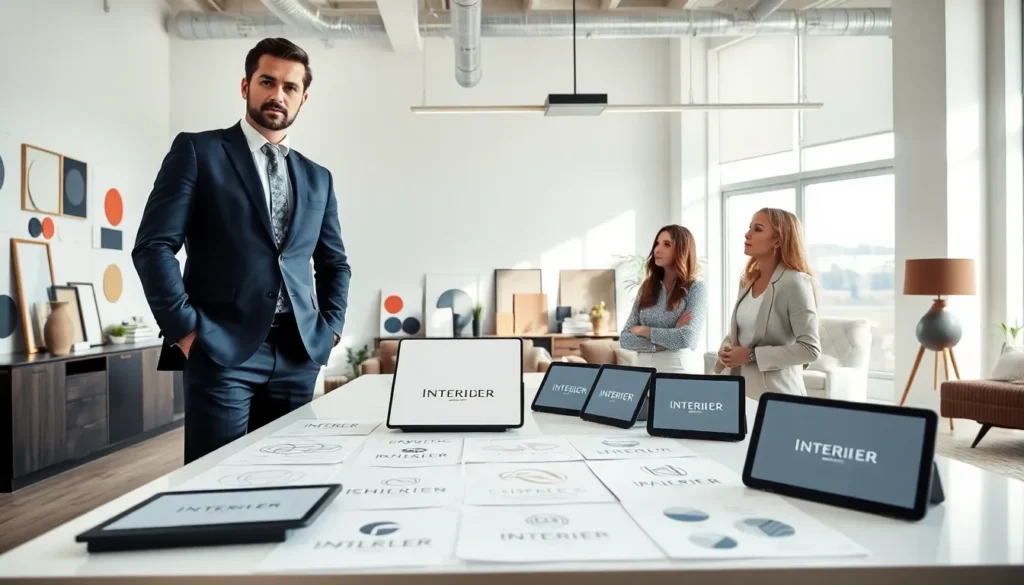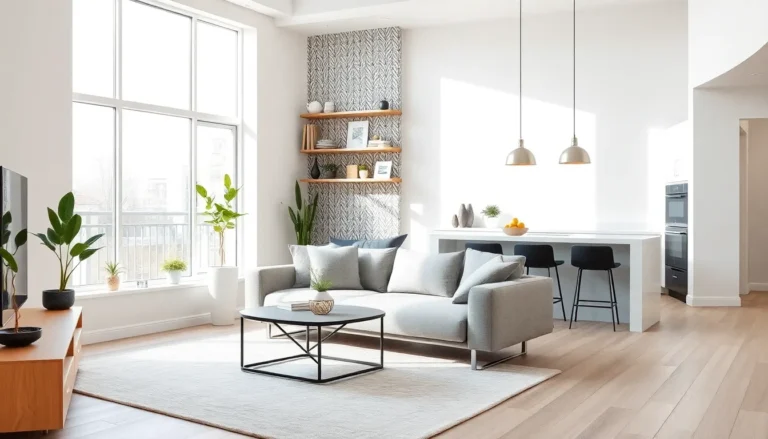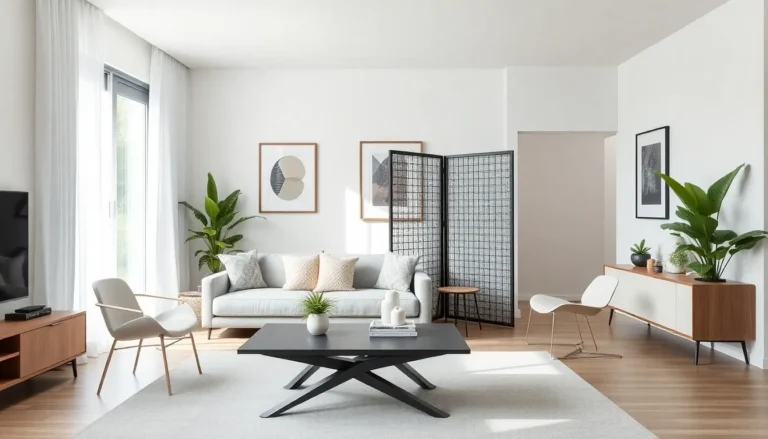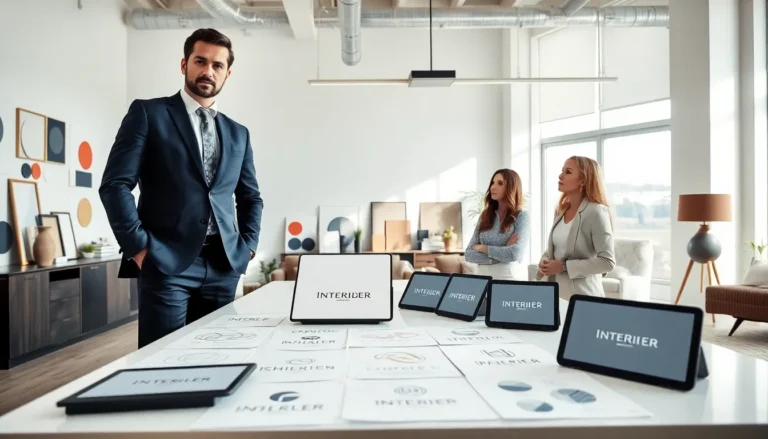Table of Contents
ToggleWhen it comes to interior design, a logo is more than just a pretty picture: it’s your brand’s first impression. Think of it as a well-furnished entryway to your business, inviting, stylish, and memorable. But, let’s face it: if your logo looks like it belongs in a garage sale rather than a high-end boutique, potential clients might just walk right past. Throughout this article, we will explore engaging interior design logo ideas that will help you stand out in a crowded marketplace. From effective elements to inspire creativity, even the most skeptical designers will find something of value. Let’s immerse and unveil your brand’s new face.
Understanding the Importance of a Logo in Interior Design

Logos serve as the cornerstone of any brand identity, especially in the world of interior design. They encapsulate the mission, vision, and overall aesthetic in a single, powerful symbol. A well-thought-out logo speaks volumes: it conveys professionalism, creativity, and trust. When potential clients see your logo, they should instantly get a feel for the type of designs you offer, whether it’s modern minimalism or bohemian chic.
Also, logos are crucial for distinguishing your brand from the countless others out there. In an industry where taste and style reign supreme, your logo can communicate your unique approach to design, giving clients a reason to choose you over competitors. It also becomes an important part of your marketing materials, appearing on everything from your website to your business cards and social media profiles. So, investing time and creativity in your logo is absolutely essential.
Elements of Effective Interior Design Logos
Designing an effective logo requires careful consideration of several key elements. First and foremost, simplicity is vital. An overcrowded design can confuse potential clients rather than attract them. Aim for a logo that is easily recognizable and easy to reproduce across various mediums.
Color choices are equally important in conveying emotion and context. For instance, earthy tones might evoke feelings of warmth, while monochromes may suggest sophistication. Consider what message you want your color scheme to communicate.
Typography plays another crucial role in your logo. Whether you choose sleek sans-serif fonts or elegant script, the typeface needs to resonate with your brand identity. It should complement the logo’s other visual elements to create a cohesive look. Finally, incorporating relevant icons, such as furniture or architectural elements, can help communicate your design style instantly.
Creative Logo Concepts for Interior Design
Now that we understand the importance and elements of effective logos, let’s explore some creative logo concepts tailored for interior design businesses.
- Geometric Shapes: Create a modern look by using geometric shapes that represent your design philosophy. Triangles point to stability, while circles symbolize unity.
- Monogram Logos: These logos focus on your initials and can be an elegant choice for a high-end design firm. The artistry in the letterforms can reflect your personal style.
- Negative Space: Utilizing negative space can make your logo stand out. For instance, you might shape a sofa using the negative space between letters. This element adds a clever twist that draws attention.
- Nature-Inspired: If your design often incorporates eco-friendly materials, consider using leaves or trees in your logo design. This symbolizes not just your design choices, but also reflects a commitment to sustainability.
- Minimalist Art: Sometimes less is more. A single icon can often be more compelling than a complex design. A stylish chair icon, paired with your brand name, can make a strong impression.
Inspiration from Iconic Interior Design Brands
Looking at established brands can yield valuable inspiration when designing your own logo. Companies like IKEA and Restoration Hardware use simple, bold designs that communicate their brand ethos effectively.
For instance, IKEA’s logo is not only straightforward text: it also reflects Scandinavian minimalism and functionality. This teaches us that aligning your logo with your brand’s core values enhances its messaging.
Another iconic brand is Anthropologie. Their use of whimsical typography paired with rich color palettes captures their bohemian vibe perfectly. This highlights how well-chosen elements can evoke a specific lifestyle befitting your target audience.
As you draw inspiration, pay attention to what aspects resonate with you in these logos. Take note of color palettes, shapes, and typography, but remember to innovate rather than imitate.
Tips for Designing Your Own Interior Design Logo
Designing your logo doesn’t have to be overwhelming. Here are some essential tips to guide you through the process:
- Research Your Competitors: Understand what’s already out there. This will help you differentiate your logo from others.
- Sketch Ideas: Before diving into digital tools, spend time sketching various concepts. Sometimes great ideas come during the brainstorming phase.
- Seek Feedback: Don’t hesitate to reach out to colleagues or mentors for their opinions. Fresh eyes can offer insights you might not have considered.
- Test for Versatility: Make sure your logo looks good in black-and-white, and in various sizes. A successful logo should be adaptable.
Using Professional Design Services vs. DIY
The choice between hiring a professional design service or creating your logo yourself can be a tough one. Professional designers bring expertise, experience, and a fresh perspective to the table. They can translate your vision into a cohesive design that aligns perfectly with your brand values.
On the other hand, the DIY route can be a cost-effective option if you’re creatively inclined. But, without proper design skills, the result may fall short of your expectations. There are plenty of online tools that can guide you through the design process, but keep in mind that professional designers often have insights that you might not.
Eventually, the decision should align with your budget, timeline, and the importance you place on logo design in your overall branding strategy.




